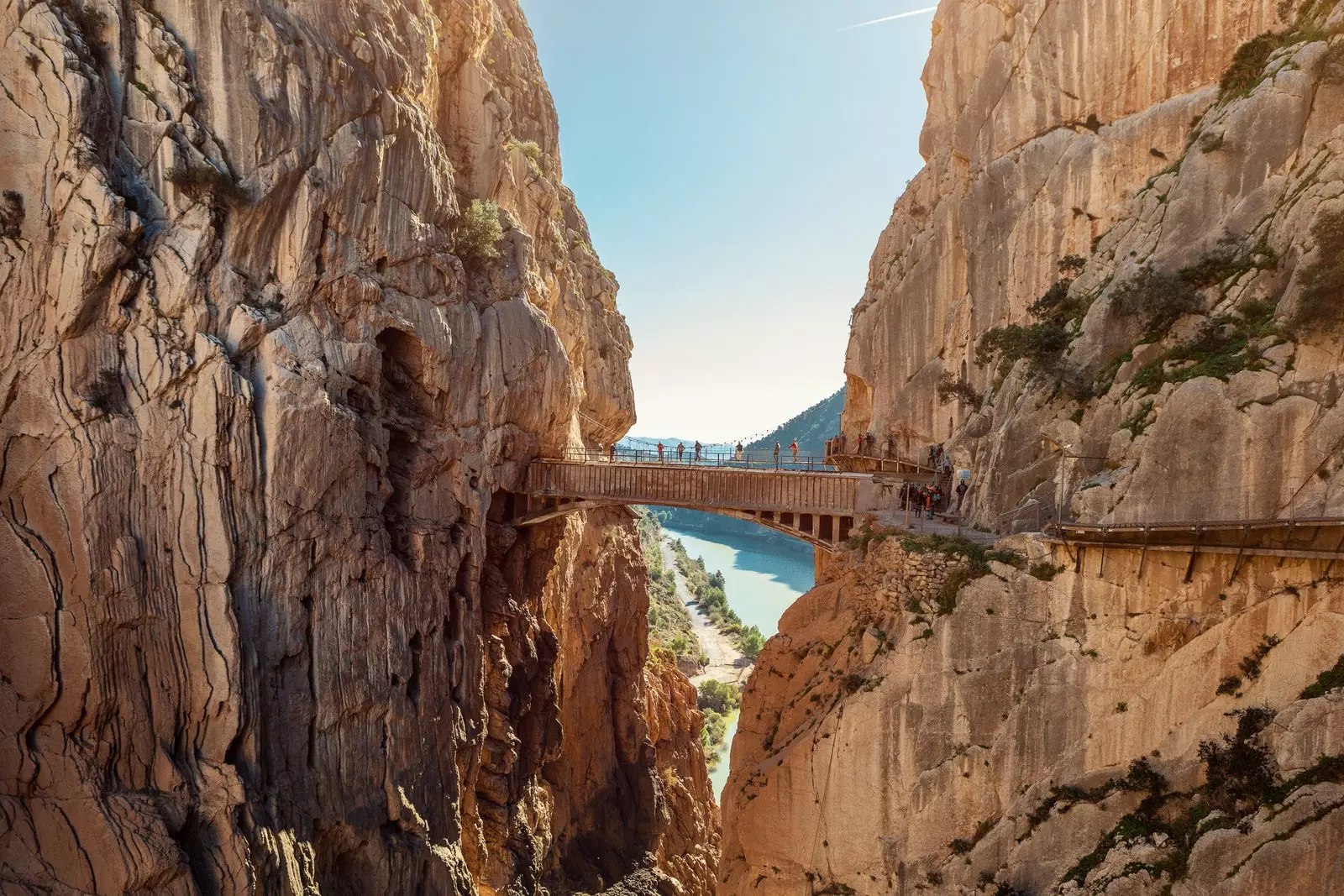
El Caminito del Rey, yes… and what else?
Visit the King's Path it can be an end in itself: it is enough and more than enough to ensure half a day full of adventures. But, what if we consider it as the perfect excuse to explore your surroundings ? Because although it has been attracting all eyes for years, it is not the only wonder that the interior of Malaga treasures, we can be sure of it.
Its surroundings are full of unique archaeological remains , traces of the past in the form of burial chambers and paintings ; but also of nature landscapes impetuous, of** villages full of charm** and gastronomic pseudo-secrets in which it is worth —and a lot— to stop.
ARDALES, A GOOD START
this little town of tangled alleys It is a clear example of the type of small towns that we are going to find in these parts and, of course, an ideal place to start the route. It's Ardales one of those quiet places , where life goes by between few shocks and the punctual visit of the odd foreigner. will have to loiter around the small square next to Calle Real , where the neighbors spend the hours chatting in the shade of their orange trees, to later follow the trail of that turret that can be seen at the top of the town.
At a slow pace, since the slopes that are spent around here are not silly, we will finally reach the Church of Our Lady of Remedies , 15th century. Right next door, the Castle of the Peña de Ardales : these are the remains of the medieval fortress built by Omar ben Harfsún, leader of the Mozarabic revolt in the mountains of Malaga. Here he was in charge of building walls, turrets and even a fortress from whose vestiges unbeatable views of the town and the Guadalteba region are obtained. Eah, we would already have the visit made.
Although after the brief history class we may deserve a glass of vermouth and some olives from the land in the Millan bar terrace , a classic of those of great tradition. It will not hurt to stop before visiting the Cave of Ardales , just 12 minutes away by road: the great surprise of the getaway.
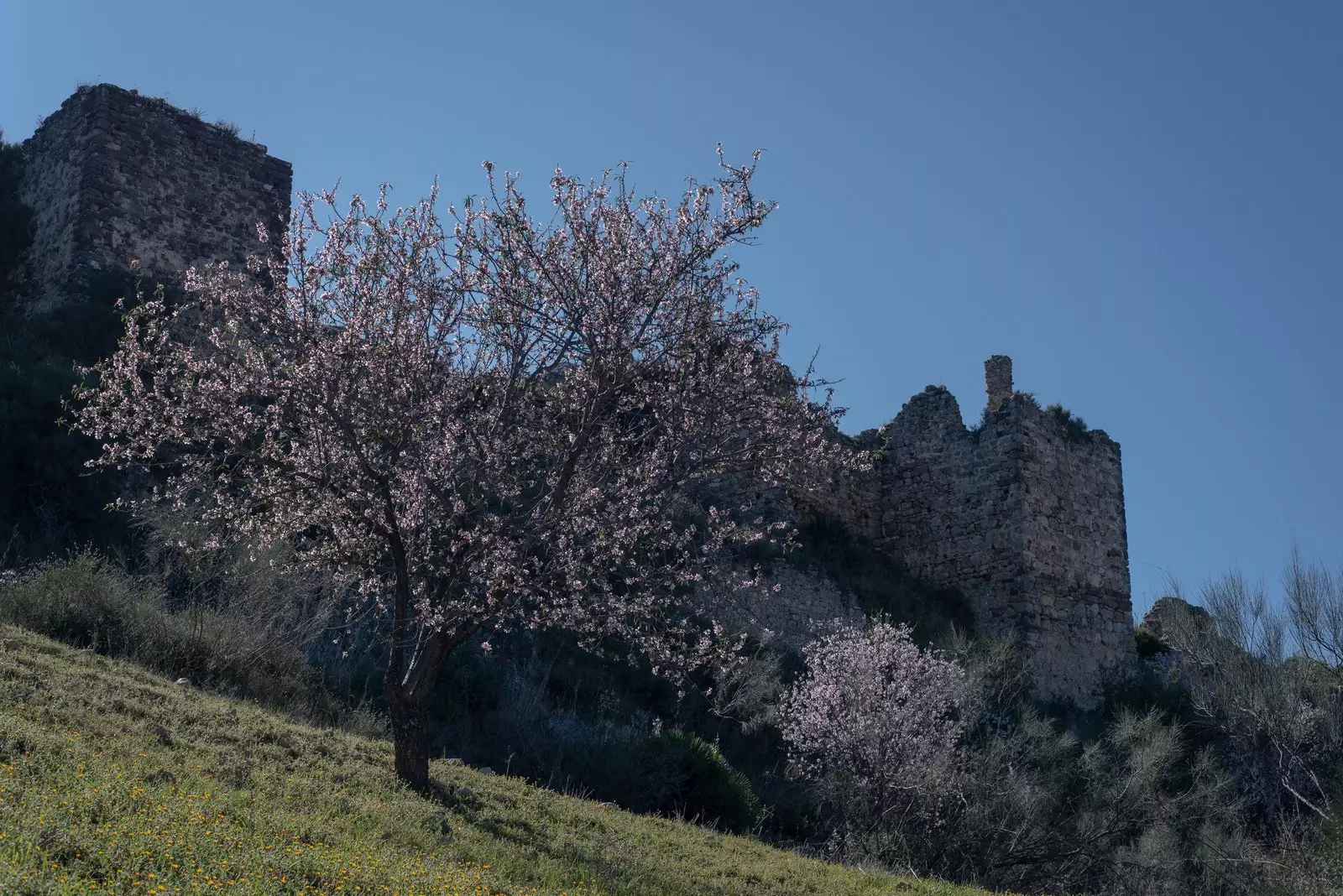
Remains of the Castle of the Peña de Ardales
THE PAST DRAWN 30 METERS UNDERGROUND
This would be a good summary of what happens in this cave discovered after an earthquake in 1821. It had been hidden for more than 3,500 years and, suddenly, that seismic movement allowed access to a whole spectacle of rock art embodied on its walls: more than 1,010 prehistoric motifs in which human figures, game, animals and even some fish were represented, revealed that already in the Paleolithic the artistic gifts of our ancestors were remarkable.
It can be said that, curiously, this was the first cave to be exploited for tourism : The residents of Ardales already charged 2 reais to those who were curious to explore it in the 19th century. Years later, the Sevillian Trinidad Grund acquired it and even held large parties inside, attended by the most select nobility of Madrid. Today, quite unlike then, the cave is protected and can only be visited by 15 people a day , prior reservation.
However, the Cueva de Ardales is only one of the three magic stones that make up a kind of patrimonial triangle which brings together large archaeological remains in a very concentrated space. a very short distance , in fact, there is another one of them: Bobastro , the city of the Mozarabs.
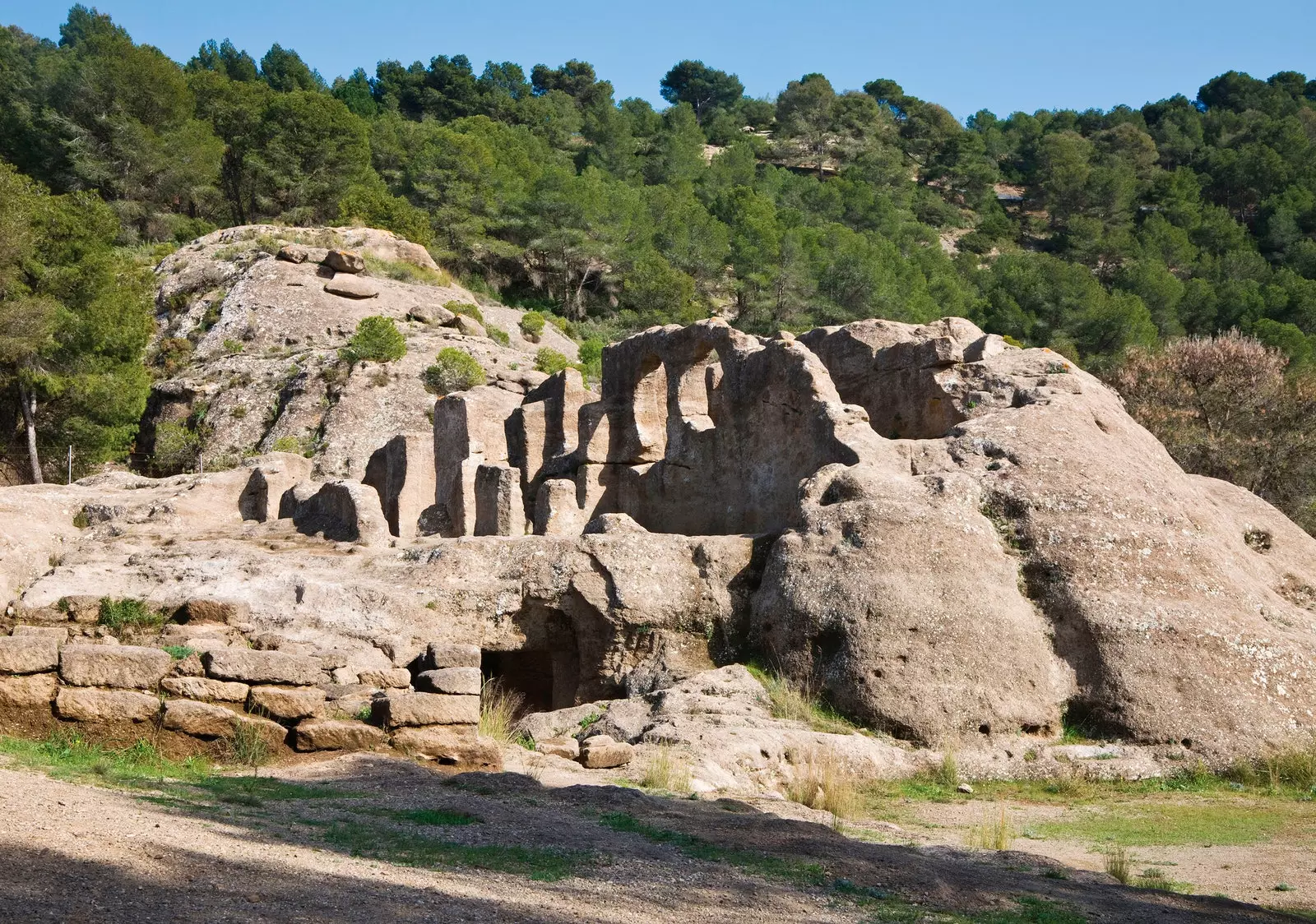
Bobastro
It is located on the same road that leads to Caminito del Rey through its southern access, from which you have to take a detour. There, surrounded by a beautiful landscape in which the large rocks sculpted over the centuries powerfully attract attention, are the remains of what was the main stronghold of the muladí Omar Ben Hafsún —Yes, the one from the fortress of Ardales—, from which he confronted and put the Caliphate of Córdoba in real trouble.
Among his great feats are not only the many battles fought: also the construction of a mozarabic basilica , the only one built in the 9th century in Al Ándalus, of which much of its structure still remains today. Taking a guided tour to discover the details of its history is a delight and something fundamental, especially since it is one of the few parts of the fortification that are still preserved. To understand the rest of the vestiges, it is best to have an explanation.
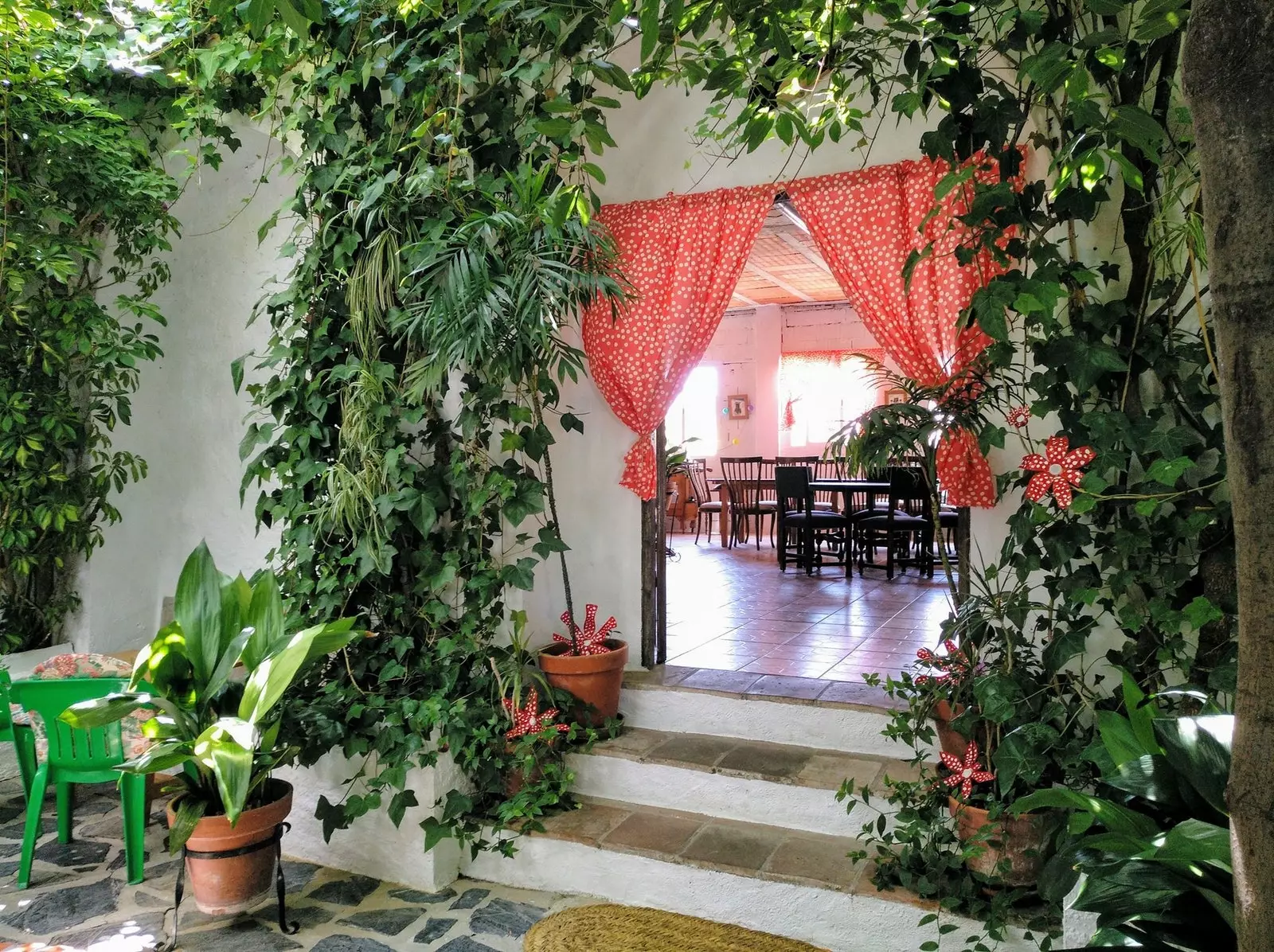
Casa Pepa - La Bocacha
STOP AND FONDA IN CARRATRACA
Half an hour later, as soon as Calle Baños is headed, in the heart of the hamlet that makes up the small town of Carratraca, the smell of rich stew, that of a lifetime, reaches us with force. The pituitary takes us directly to its origin, at number 18. There is Peppa House , the place to go if what we want is to experience the traditional cuisine of the region in its purest essence.
Pepa, the original, no longer attends the tables because age has denied her the agility that she had before, but she dedicates herself to crocheting in one of the rooms next to the kitchen. Her sons and her daughters-in-law are already there to work, who run the business with absolute ease. The house itself, divided into several rooms, has rustic-style tables and chairs where the dishes of the day are served as God intended: with a bowl on the table and with spoons on demand. Here each one adds what they want to the plate and as many times as they like.
And the list of delicacies to try is long: the gazpachuelo It is a house brand and a must-taste, but the soup with noodles, paella, choricillos, meatballs or potatoes with eggs , all seasoned with a bottle of wine and another of soda, as it should be. On the other side of a small interior patio, the sound of the saucepans and the hustle and bustle that occurs between the stoves is the protagonist.
Pepa tells whoever wants to hear the anecdote of when, years ago, he sat there eating Charles of England . Not even a miserable photo was taken of him, but he ate the potato stew to taste. The experience, by the way, costs 10 euros per person, although the little coffee —and the courtesy cake—, yes indeed, you have to go take it to La Bocacha , the neighboring business run by Pepa's granddaughters.
And since we are in Carratraca, what better way to** wash off the meal with a walk that reveals its charms**. And it is that although it barely has 750 inhabitants, its history is very interesting. Starting with your thermal waters , famous since time immemorial for its healing properties. If already in the past they were enjoyed by Romans and Arabs, later, well into the 19th century, they became fashionable among the European high bourgeoisie.
Today, to taste them, you have to go to the Villa Padierna Thermas Hotel , a five-star grand luxury housed in a marvelous neoclassical building ordered to be built by Fernando VII in the very center of ratchet and in which to treat yourself to receive all kinds of treatments. Nowadays the waters of the Carratraca Spring are classified as mineral-medicinal and are classified as sulfur, calcium and magnesium. A curiosity? Throughout history, people as diverse as Alejandro Dumas, Lord Byron, Hans Christian Andersen, Reiner María Rilke... or Antonio Banderas have passed through them.
Before leaving we must go to the town hall , which occupies the magnificent Neo-Mudejar style mansion that was the recreational site of Doña Trinidad Grund. Just to contemplate the incredible views that you can enjoy of the Alcaparaín, Baños and Aguas mountains from them, it is already worth approaching. Nor will it hurt, by the way, to visit the old bullring : Built in 1878, one of its peculiarities is that the stands are practically embedded in the rock of the mountain.
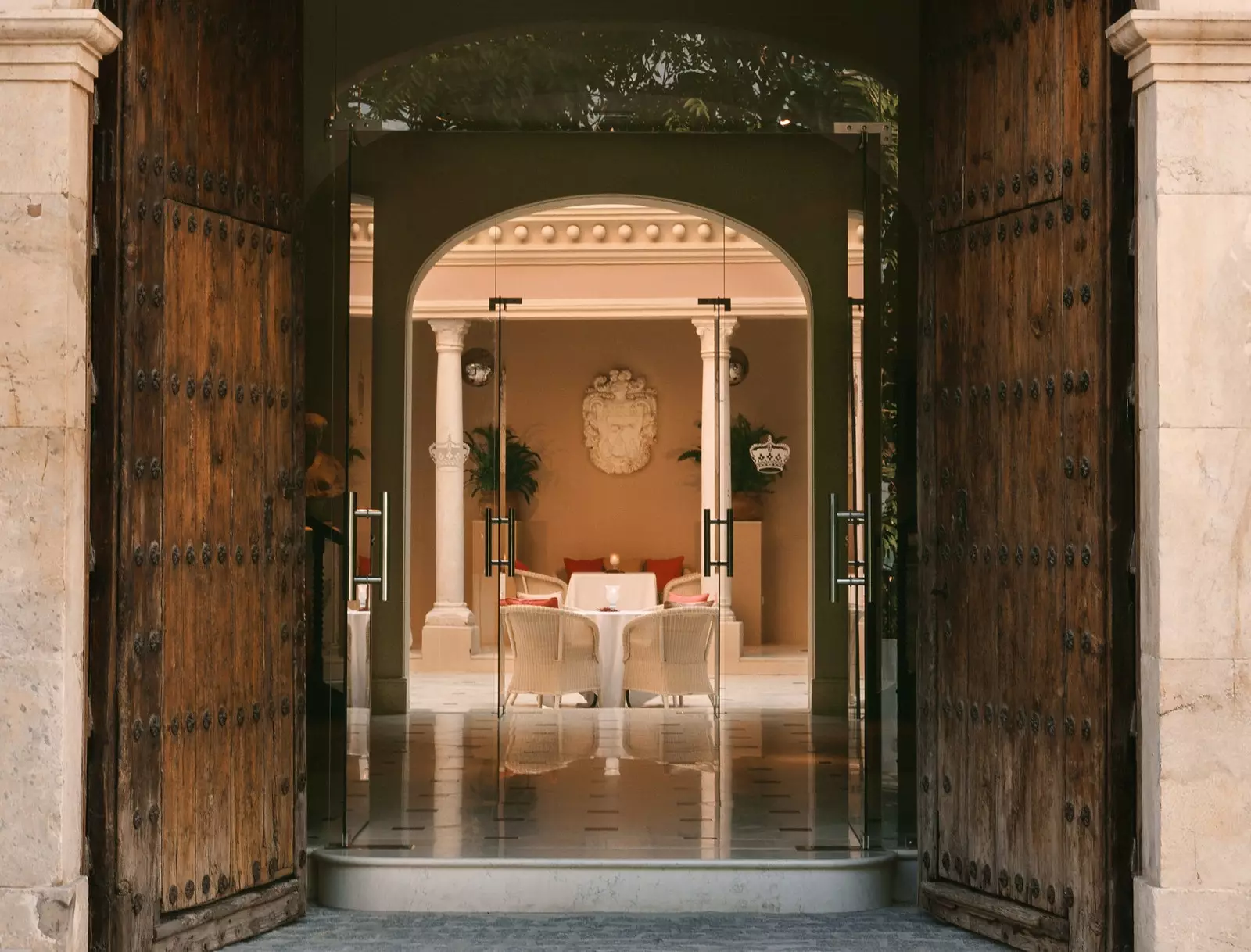
Villa Padierna Thermas Hotel
THE CERRO DE LAS AGUILILLAS: THERE ARE NOT TWO WITHOUT THREE
We already said it a few lines above: the Caminito del Rey is wonderfully accompanied by other archaeological treasures. Having visited the first two, we still have the third: this necropolis formed by 7 tombs with more than 4 millennia of history.
This archaeological site was discovered at the end of the 1980s and the bone remains of around 50 people** of various ages were found in it. Along with them, too pieces of tools and trousseau made up of ceramic pieces, seashell-based beads and even stone amulets. Your visit is one more stop to understand a past that is an undeniable part of the present.
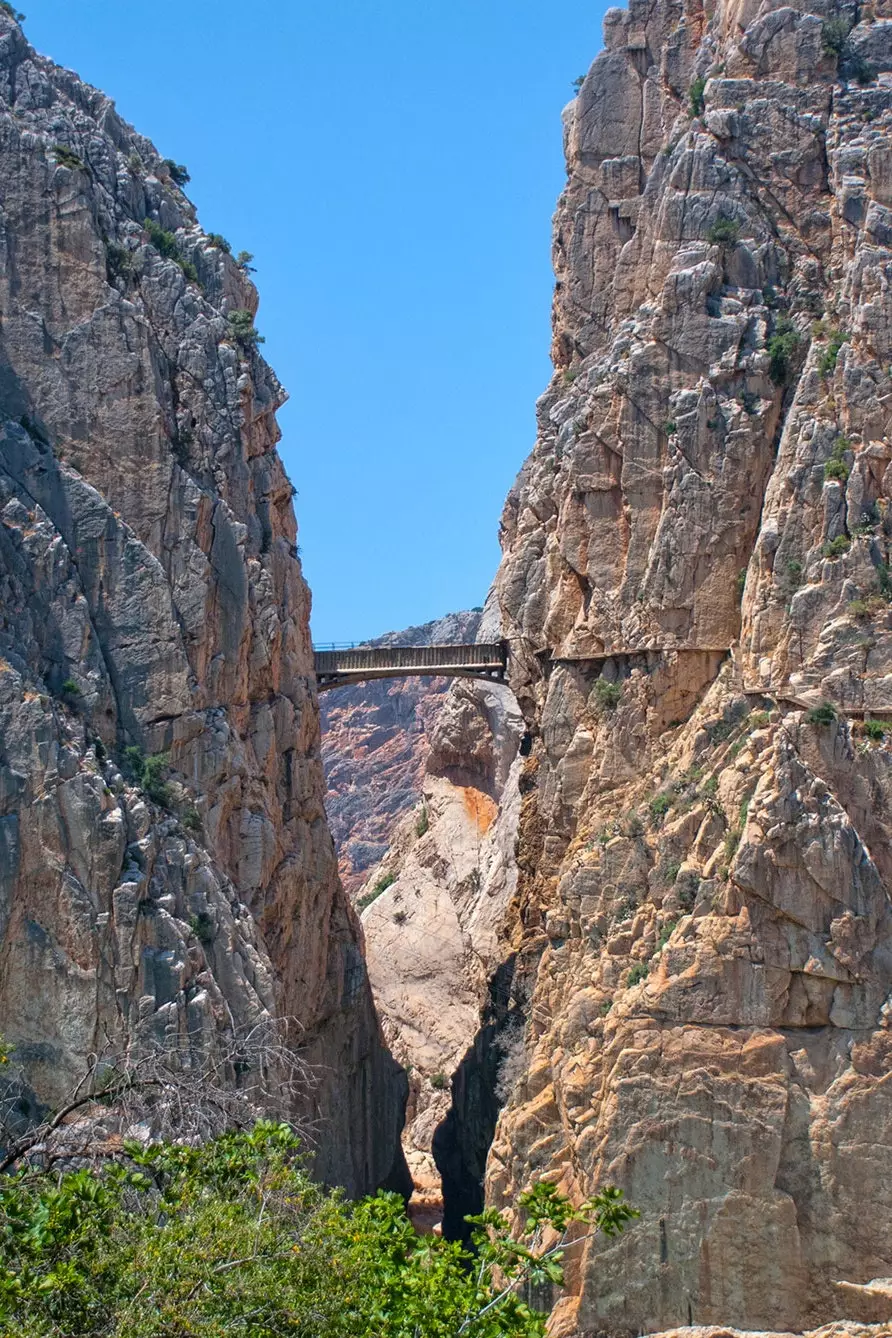
It may not be within reach of your legs now, but it is within reach of your clicks
AND, NOW YES: THE ROAD
Finally, after several months without seeing the surprised visitors wander through its vertiginous —and narrow— aerial walkways, the path of paths reopened its doors on June 12 willing to continue delighting those eager for strong emotions. To make the visit it is necessary to book and tickets can be purchased through its website.
Because few experiences can generate as much adrenaline as that of tour the Gaitanes Gorge along this historic route, and we have already told you about this countless times: the vertical walls of up to 700 meters high created by the passage of the Guadalhorce River were forging, over time, this striking canyon giving rise to one of the most beautiful natural wonders in Andalusia. No one will dare to say otherwise.
So with the homework done and the surroundings well studied, there will be no excuse to delay it any longer: we will start the route that has served as the pretext to get here. Even what was, for much of its history, the most dangerous trail in the world. Until the one that is, today, one of the most beautiful places in the south.
